This is a guest post by Natalie Stepanova, Head of Marketing & PR at Apptica, a mobile advertising intelligence and app analytics tool.
Hypercasual games represent a relatively young genre of mobile games, which has become one of the main trends in 2019. Up to now, they remain on top of the App Store and Google Play downloads charts around the world. In this article, we will talk about the current state of the hypercasual industry in 2019, and also consider the case of the most successful hypercasual game released by Azur Games that has been at the top of hypercasual games for more than three months — Stack Ball.
We should note that the category of hypercasual games does not exist in any of the stores, so we considered the Casual category (where, according to our observations, the majority of hypercasual games are) on iOS and the Arcade and Casual categories on Android for data analysis. Statistics data given in the article are collected by Apptica for all advertisers in the categories mentioned above for the period from January 1, 2019 to July 31, 2019 in 35 countries and 25 Ad Networks.
Advertising Market in Numbers
Creating a mobile game is almost always about making a profit. Developers want to earn money from their game either through in-app purchases or through advertising within the app. Indeed, it is a common fact that the profit of successful publishers releasing hypercasual games is measured in billions of dollars a year.
However, you should remember that, in order to monetize successfully, the game should have many users ready to make purchases or watch ads within the app. You can attract traffic to your project through paid channels: it can be ads on social networks, in the browser, or other mobile apps. Although the combination of all these methods is most often used, we will consider mobile advertising.
According to Mobile Advertising Report for Q2 2019, hypercasual games accounted for 38.11% on iOS and 29.60% on Android of all advertising traffic purchased by the Game category in 2019. Such large amounts of advertising can be explained by the fact hypercasual games are quite simple in terms of gameplay and sometimes resemble each other, so publishers have to make more efforts for standing out among other hypercasual games and attracting more traffic.
According to statistics, publishers use at least three ad networks at the same time for purchasing. It can be classic networks like Applovin or AdMob, as well as Facebook and Instagram social networks. Most of the advertising traffic in hypercasual games relates to Applovin (about 35%), followed by Facebook.
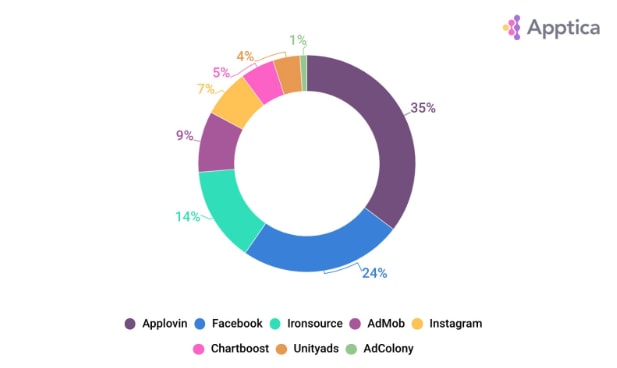
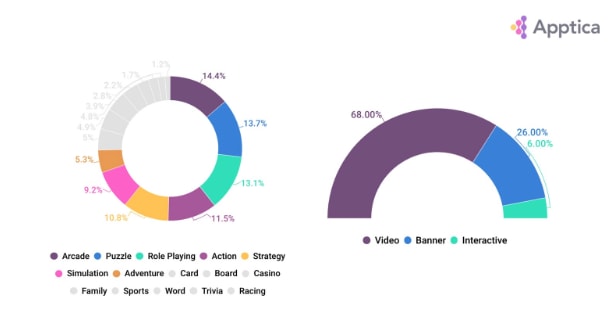
Hypercasual is also one of the most productive categories in respect of ad creatives’ production. In 2019, hypercasual games account for 15% of all ad creatives in the Games category. Video represents the most popular ad creative type. This advertising format accounts for almost 70% of all ad creatives in hypercasual games.
We connect so many creatives not only with the popularity of such a young category but also with the simplicity of creative production: video advertising often repeats the gameplay, which leaves a lot of space for tests and experiments.
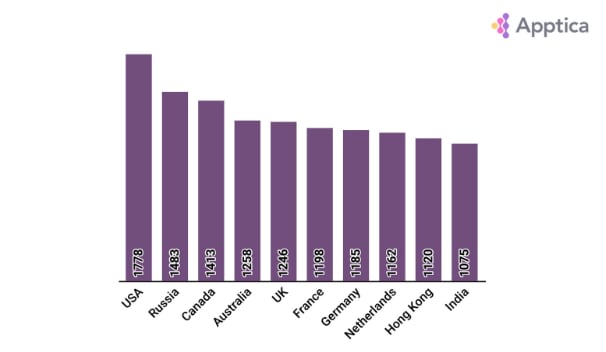
Another parameter in the UA (User Acquisition) strategic planning process is the countries in which advertising will be shown. Advertisers in hypercasual games prefer English-speaking countries — the USA, Canada, Australia, as well as Russia and European countries: Great Britain, Germany, France, and the Netherlands. Hong Kong also holds one of the leading positions in this list.
In sum, statistics show that successful hypercasual games attract advertising traffic as follows: they use several ad networks, mainly Applovin and Facebook; produce and test a lot of ad creatives, videos as a rule; prefer the USA, Russia, Canada, Australia, and European countries.
Stack Ball Case Study
Stack Ball is a young hypercasual game by Azur Games, which topped the App Store and Google Play charts around the world a month after its release. Let’s consider the strategy that the publisher used to attract traffic.
iOS
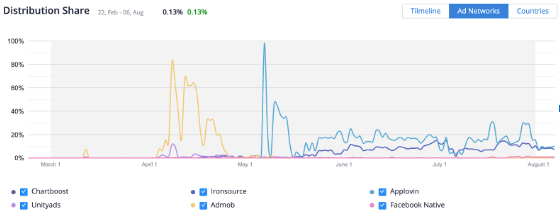
In April, advertising purchase starts: the company is testing several video creatives of the app on iOS using AdMob and Unity Ads networks.
Having tested the first ad creatives, Azur Games starts to buy ads in Tier1 countries actively. Now there are 140 unique ad creatives in rotation, 100 of which — videos. According to the first tests’ results, preference is given to AdMob — 90% of traffic is purchased there in April.
Android
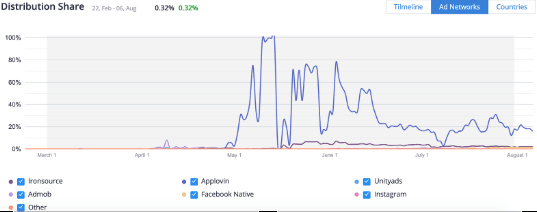
On Android, an even more active advertising purchase starts in May. 95% of ads are purchased in Applovin network, then banner and interactive advertising appear. Compared to iOS purchases, ads are shown more evenly: the focus is not only on the US and European countries but also on Asia and Russia.
In mid-May, the game reaches tops of both stores, and advertising serves to maintain the number of active users. Advertising on Facebook and Instagram is purchased. Google Adwords is also active on the web side.
Advertising on Facebook
The dependence of downloads’ increase upon in-app traffic’s attraction is obvious — in May (the period that accounts for the largest volume of mobile advertising, see the graph above), the number of downloads increased several times compared to the previous month.
All told, traffic buying is essential for publishers because it ensures not only the growth of the app but also significant revenue growth. It is necessary to attract the audience at any stage of product promotion after release. Regardless of the scale of purchasing, its optimization is essential. The competent UA adjustment campaign allows us to increase the number of downloads significantly and, as a result, the publisher’s income from in-app purchases or ad views.
















